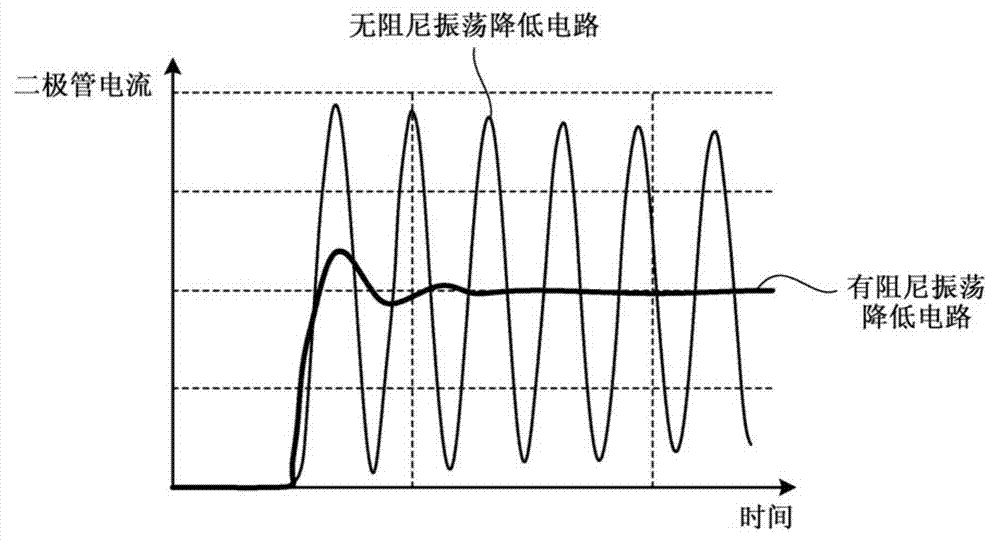Power conversion apparatus and buffer capacitor
A technology of power conversion device and buffer capacitor, which is used in capacitors, irreversible DC power input to convert AC power output, electrical components, etc., can solve problems such as secondary coil short circuit, and achieve the effect of reducing damping oscillations
- Summary
- Abstract
- Description
- Claims
- Application Information
AI Technical Summary
Problems solved by technology
Method used
Image
Examples
Embodiment approach 1
[0025] As an example of a power conversion device, consider an inverter for driving a motor. figure 1 It is a schematic diagram showing a motor drive device including an inverter.
[0026] Such as figure 1 As shown, a P-side power line 2 and an N-side power line 3 are respectively connected to the positive pole and the negative pole of the DC power supply 1 . A smoothing capacitor 4 is connected between the P-side power line 2 and the N-side power line 3 . As the smoothing capacitor 4, for example, an electrolytic capacitor is used. Furthermore, an inverter 5 is connected between the P-side power line 2 and the N-side power line 3 . Furthermore, an electric motor 6 serving as an inductive load is connected to an output end of the inverter 5 . The inverter 5 converts the DC voltage from the DC power supply 1 into a three-phase AC voltage through conversion, and outputs the three-phase AC voltage to the motor 6 . As a result, motor current flows through the motor 6, and the...
Embodiment approach 2
[0053] In Embodiment 2, the case where the above-mentioned conductor 60 (first conductor) on the current path 50 is a lead portion of the snubber capacitor 41 will be described.
[0054] Image 6 is an overall view showing the snubber capacitor 41 . The snubber capacitor 41 has a capacitor body 100 and a pair of pins 110 (110-1, 110-2). The pins 110 are used to connect the capacitor main body 100 and external wiring. More specifically, one of the pins 110-1 and 110-2 is connected to the P-side electric force line 2 (P-side electrode 12), and the other is connected to the N-side electric force line 3 (N-side electrode 13).
[0055] In this embodiment, the ringing reduction circuit 70 is connected to one or both of the pins 110-1 and 110-2. exist Figure 7 An example of a configuration for realizing the damping reduction circuit 70 as described above is shown.
[0056] First, the lead 110 is formed of a first conductor (hereinafter, the first conductor is also referred to a...
Embodiment approach 3
[0070] The conductor 60 (first conductor) on the current path 50 is not limited to the pin 110 of the snubber capacitor 41 . For example, conductor 60 may be electrodes (P-side electrode 12 , N-side electrode 13 ) of switching elements ( 21 , 31 ) in power module 10 . In this case, the ringing reduction circuit 70 is connected to one or both of the P-side electrode 12 and the N-side electrode 13 .
[0071] Figure 8 A circuit configuration in a case where the conductor 60 (first conductor) is the P-side electrode 12 of the power module 10 is schematically shown. Such as Figure 8 As shown, the ringing reduction circuit 70 is connected in parallel with the P-side electrode 12 . Thereby, the same effects as those of the foregoing embodiment are obtained.
PUM
 Login to View More
Login to View More Abstract
Description
Claims
Application Information
 Login to View More
Login to View More - R&D Engineer
- R&D Manager
- IP Professional
- Industry Leading Data Capabilities
- Powerful AI technology
- Patent DNA Extraction
Browse by: Latest US Patents, China's latest patents, Technical Efficacy Thesaurus, Application Domain, Technology Topic, Popular Technical Reports.
© 2024 PatSnap. All rights reserved.Legal|Privacy policy|Modern Slavery Act Transparency Statement|Sitemap|About US| Contact US: help@patsnap.com










